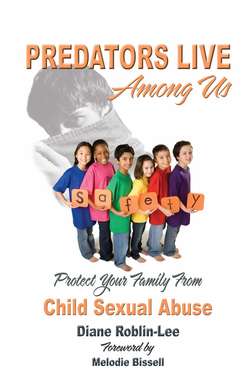Читать книгу Predators Live Among us - Diane Roblin Lee - Страница 17
На сайте Литреса книга снята с продажи.
Incest—the family secret
ОглавлениеUntil recently, when people began to open up about childhood secrets, it was thought that incest (where the offender is a member of one’s own family or someone in a very close position of trust—such as a stepfather or stepmother) was a disgusting, rare aberration, most commonly found in the hills of Kentucky.
Disgusting, yes—but rare, no—and Kentucky, yes, but everywhere else, too.
A Canadian Public Health Agency fact sheet revealed that:
“Incest offenders reflect the same range of education, religion, occupation, intelligence and mental health status as can be found in a representative cross-section of the general population. Abusers are found among all ages, ethnocultural communities and social classes.”
Once again, because of the nature of the crime, exact statistics are impossible to gather. The FBI and the U.S. Justice Department estimate that only one in ten cases is reported. Still, from their work in the field, Susan Forward and Craig Buck estimate that ten million American women have been incest victims, while Sandra Butler19 contends that the figure is closer to twenty-five million.
Whatever the true numbers are, they are staggering, when one considers the betrayal of trust behind each and every one of those numbers.
“Incest is perhaps the most difficult kind of abuse for children to endure, because the feelings it generates are so overwhelming, confusing and conflicting. Children instinctively love their parents and other family members and cannot reconcile this love with what is being done to them. They are torn between love and hate, and tormented by the betrayal of those they trusted. They are overwhelmed by helplessness because they cannot escape; they have nowhere to go. The very people to whom they should run for protection are their abusers. And they believe that if they tell, they will destroy their families and their source of survival. They are trapped and helpless. And they are tortured by the conviction that they are bad or evil and that they are somehow to blame.20
“As if the natural attachment were not enough to immobilize victims, psychologists have recently discovered that the abusive situation itself establishes a bond between abuser and victim. This bond chains the victim to the abuser even if the abuser is completely unrelated to the victim. This grim phenomenon is known as the “Stockholm Syndrome,” and it was first detected in hostage situations where hostages were found to experience positive feelings towards their captors and negative feelings toward the police. The captors (perpetrators) reciprocated by developing positive feelings towards the hostages. This syndrome is more likely to develop in hostage (or abuse) situations which last for a prolonged period of time.... If the abuse is occurring to a child within the family, the victim is effectively a hostage, without means of escape.”21
If exhibiting the symptoms of the Stockholm Syndrome, a child may appear to be very affectionate towards the abuser, but it’s generally because he or she is trying to exert some control over his or her life. Such children think that if they are particularly pleasing to the perpetrator, the abuse may end or at least their world may not fall apart any more than it already has.
